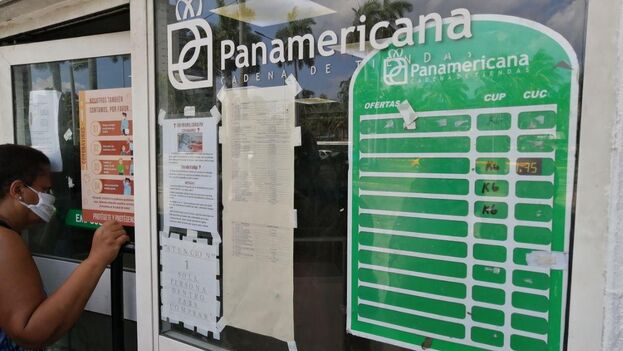
![]() 14ymedio, Yoani Sanchez, Generation Y, Havana, 18 July 2020 – The first time I entered a hard currency store was in long distant 1994. I had to show the three one-dollar bills that a friend had given me, and thus managed to enter the shopping* on the ground floor of the Seville hotel, near the Capitol in Havana. The smell of cleanliness, the air conditioning and the shelves full of products were a hard blow for this Cubanita who, until then, had only known about state-run businesses and the rationed market. Since then it has rained a lot, but it also seems that history moves in circles on this Island.
14ymedio, Yoani Sanchez, Generation Y, Havana, 18 July 2020 – The first time I entered a hard currency store was in long distant 1994. I had to show the three one-dollar bills that a friend had given me, and thus managed to enter the shopping* on the ground floor of the Seville hotel, near the Capitol in Havana. The smell of cleanliness, the air conditioning and the shelves full of products were a hard blow for this Cubanita who, until then, had only known about state-run businesses and the rationed market. Since then it has rained a lot, but it also seems that history moves in circles on this Island.
This week, after the independent press leaked that stores were being prepared sell food and toiletries in foreign currency, many emphatically denied that possibility on the premise that “something like this cannot be.” Curiously, until Miguel Díaz-Canel confirmed, this Thursday afternoon, that the network of businesses managed by Cimex was going to offer food in dollars, euros or other foreign currencies, some clung to the conviction that such a segregationist measure could not be implemented in this country.
Memory is a slippery animal. This is exactly what Fidel Castro did when, in August 1993, he authorized the possession of dollars and fired the starting gun for the appearance of a vast network of state stores where you could pay only in that currency. The time came when those lacking US banknotes looked on – salivating – as others bought cookies, frozen chicken, sausages or soda in a type of store that, soon after, began to introduce the convertible peso (CUC) into its operations.
We have already experienced this, but many do not remember or do not want to remember. The dual monetary system became something so ordinary that, little-by-little over the last 20 years, we “normalized” the idea that to acquire merchandise of better quality and variety you had to have convertible pesos. The only difference now, with respect to recent years, is that the currency that once again governs the country’s destinies, and that guarantees a certain personal comfort, is the one with the faces of Lincoln and Franklin, one that had already determined our life in the 90s but that, this time, operates through magnetic cards.
This is nothing new: every time in the last half century that the Plaza of the Revolution has felt that the critical economic situation could shake its power, it has allowed certain winds of the market to flow over the Island and a social group to find accommodation in some shots of consumption. Nothing should surprise us in that strategy, which they have repeated so many times, although the double talk of proclaiming one political model and applying another that is so different, must not fail to outrage us.
Among those who until Thursday doubted that foreign exchange stores would include food, at a time of brutal shortages of food in the markets that sell in local currency, most were from my son’s generation. Cuban youths who were born after the shoppings opened, and the free circulation of the dollar allowed and the subsequent appearance of the commonly called chavito, the Cuban convertible peso (CUC).
For them, state commerce operated in two currencies: the CUC and the CUP… but they forgot – or could not remember due to age issues – that under the skin of those colored pieces of paper called convertible pesos there was always the bristling hair of a wolf named the dollar, a wolf which is now about to become the owner of the new hard currency stores. Any other version is bedtime story about Little Red Riding Hood.
____________
COLLABORATE WITH OUR WORK: The 14ymedio team is committed to practicing serious journalism that reflects Cuba’s reality in all its depth. Thank you for joining us on this long journey. We invite you to continue supporting us by becoming a member of 14ymedio now. Together we can continue transforming journalism in Cuba.
